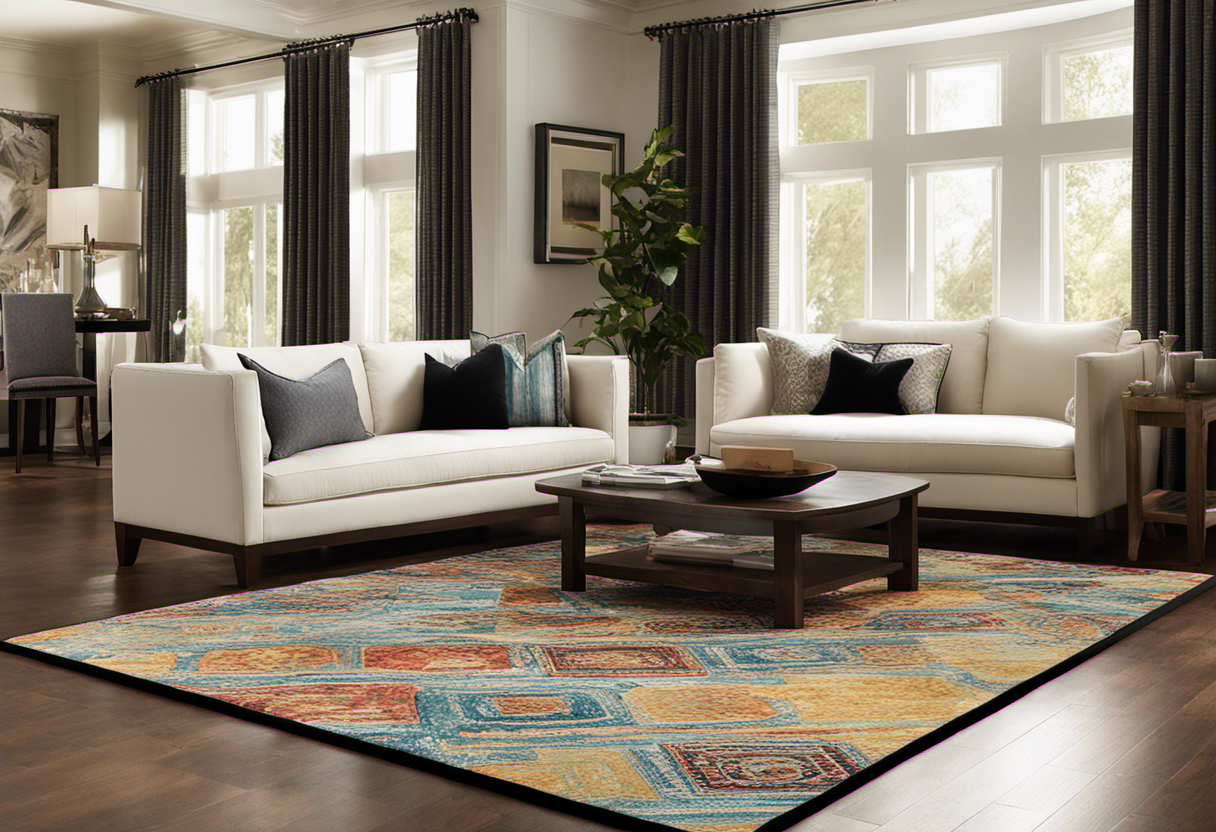A Complete Guide to Area Rugs: Transforming Your Space with Style and Comfort

Area rugs are a versatile and essential component of interior design. They have the power to transform any space, adding warmth, style, and comfort. From the living room to the bedroom, a well-chosen area rug can tie a room together and create a focal point. However, with so many options available, choosing the right area rug for your space can be a daunting task. This complete guide will help you navigate the world of area rugs, providing you with all the information you need to make an informed decision.
1. Understanding the Purpose of an Area Rug
Before diving into the world of area rugs, it's essential to understand their purpose. An area rug serves several functions:
a) Defining Spaces: Area rugs can help define individual spaces within a larger room. By placing an area rug under a dining table or in a seating area, you create a distinct area within a larger space.
b) Adding Comfort: Area rugs provide a soft surface underfoot, making any room feel cozier and more comfortable.
c) Enhancing Acoustics: Rugs help absorb sound, reducing echo and making a room quieter.
d) Protecting Floors: By placing area rugs in high-traffic areas, you can protect your floors from wear and tear.
2. Choosing the Right Size
One of the most crucial aspects of selecting an area rug is choosing the right size. A rug that is too small will make the room feel disjointed, while a rug that is too large can overwhelm the space. Here are some guidelines to help you determine the appropriate size:
a) Living Room: When choosing a rug for the living room, you want it to be big enough to fit all the furniture in the seating area. Ideally, the rug should extend beyond the edges of the furniture by about 18 inches to create a cohesive and anchored look.
b) Dining Room: In the dining room, the rug should be large enough to accommodate both the dining table and chairs, even when they are pulled out. Make sure there is enough space for the chairs to slide in and out comfortably without catching on the rug.
c) Bedroom: In the bedroom, the area rug should cover a significant portion of the floor, extending at least 2-3 feet beyond the edges of the bed. This creates a soft landing spot for your feet when you get out of bed in the morning.
3. Determining the Best Material
Area rugs come in a variety of materials, each with its unique advantages. Here are some popular options and their characteristics:
a) Wool: Wool is a durable and naturally stain-resistant material that is soft and luxurious underfoot. It is an excellent choice for high-traffic areas.
b) Synthetic Fibers: Synthetic materials like nylon and polyester are affordable, easy to clean, and resistant to fading. They are a practical choice for households with children and pets.
c) Natural Fibers: Natural fibers such as sisal, jute, and seagrass add a touch of texture and bring an organic feel to your space. They are ideal for adding a casual and relaxed vibe.
d) Silk: Silk rugs are known for their lustrous appearance and softness. However, they require more delicate care and are better suited for low-traffic areas.
4. Choosing the Right Style and Pattern
When it comes to style and pattern, the possibilities are endless. However, there are a few key considerations to keep in mind:
a) Coordinating with Furniture: Choose a rug that complements your existing furniture and decor. Consider the colors and patterns in the room and look for a rug that ties everything together harmoniously.
b) Creating Contrast: If your furniture and walls are neutral, consider using a rug with a bold pattern or vibrant colors to add visual interest and create contrast.
c) Considering the Room's Function: The rug you choose should align with the room's function. For example, in a formal living room, a traditional patterned rug might be more appropriate, while a playful and colorful rug might be better suited for a children's playroom.
d) Considering Maintenance: Consider the level of maintenance required for different rug styles. Rugs with intricate patterns or light colors may require more frequent cleaning, while darker rugs or those with busier patterns can hide stains more effectively.
5. Maintaining and Caring for Your Area Rug
To ensure your area rug stays fresh and beautiful for years to come, proper care and maintenance are essential. Here are some tips to keep in mind:
a) Regular Vacuuming: Vacuum your rug regularly to remove dirt and debris. Be sure to use a vacuum with a brush attachment to thoroughly clean the fibers.
b) Spot Cleaning: Treat spills and stains promptly to prevent them from setting into the rug. Blot the area with a clean cloth and use a mild detergent or cleaning solution specifically designed for rugs.
c) Rotating the Rug: To ensure even wear, rotate your rug every six months. This will help prevent any one area from becoming overly worn.
d) Professional Cleaning: Consider having your area rug professionally cleaned every one to two years, depending on its condition and use. Professional cleaning helps remove deeply embedded dirt and refreshes the rug's appearance.
In conclusion, area rugs are a versatile and impactful addition to any space. They not only provide comfort and warmth but also have the power to transform a room with their style and design. By understanding the purpose of an area rug, choosing the right size, material, style, and pattern, and following proper maintenance protocols, you can ensure your area rug remains a stunning focal point in your home for years to come.
